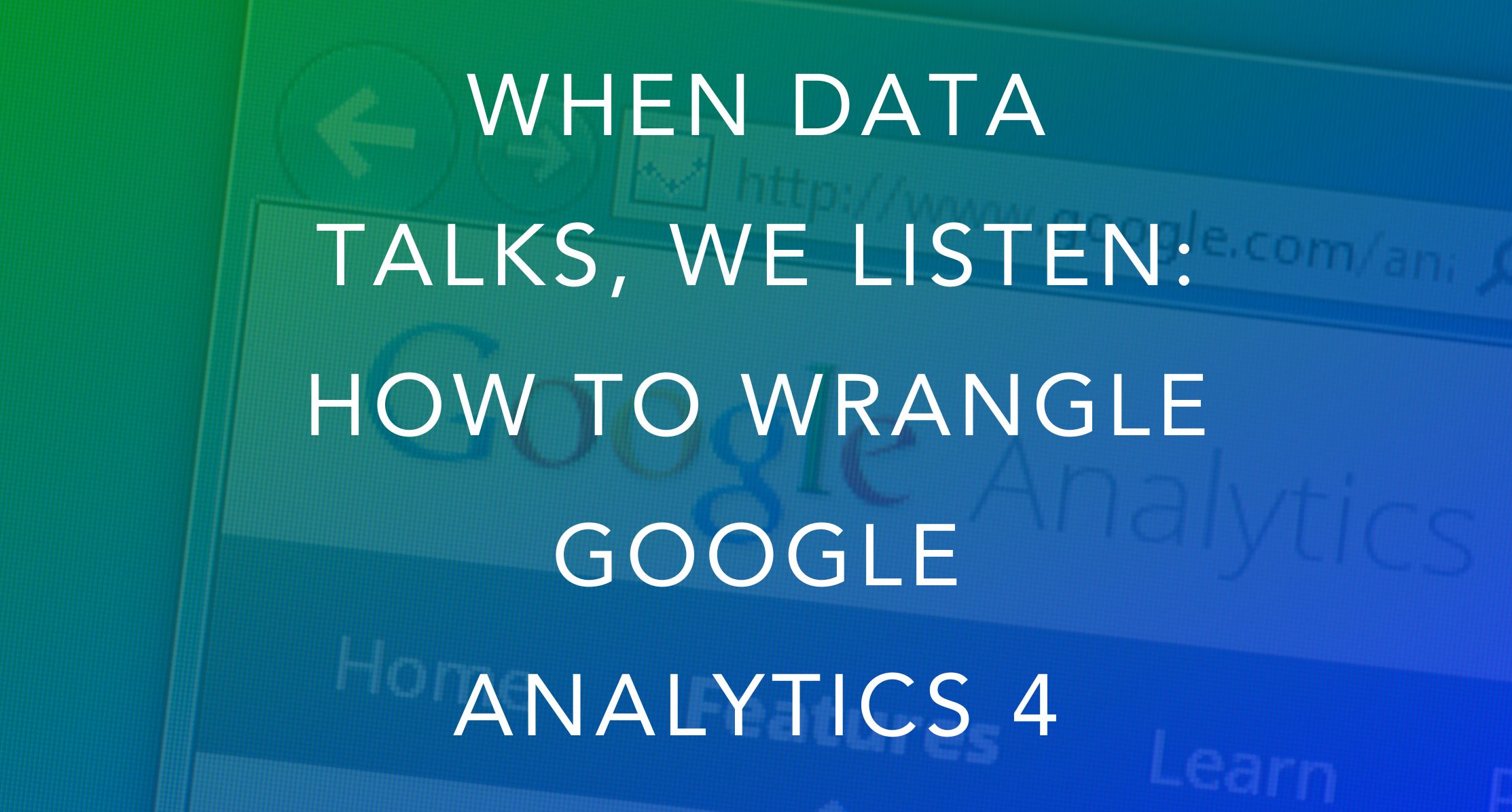What do the Simpsons season 32, the iPhone 13, Web 4.0, and Google Analytics 4 have in common? They’re all the latest and greatest – and they’re all things you might’ve missed because, well, 2022.
Now look, I’ve got my thoughts about the Simpsons, but I’ll leave that to the pros. One thing I can chime in on? Google Analytics 4. If you haven’t dug into our fave analytics platform’s new look and new functionality, here’s what to know before Universal Analytics makes the full transition on GA4 inJuly 2023.
Argh, how do I know what to measure?!
Okay, so the #1 question you have is how to know whether you’re killing at this social media thing. Unfortunately GA4 doesn’t come with a flashing banner that tells you whether this is the case right off the bat. But good news: you can figure it out by cross-referencing a few different measurements.
Traffic source.
Go to Home > Reports > Acquisition > Traffic Acquisition (change the default format to “session source”). This will tell you where your traffic is coming from – including which social media platform. (Spot some surprises? Adjust your social media strategy accordingly.)
Traffic engagement.
Is your engagement rate over 50%, with engagement lasting 30+ seconds? Go you! If it’s not, it’s time to review your content to make sure it’s delivering value.
Top pages.
Go to Engagement > Pages and Screens to see which pages on your website are getting the most eyeballs. This will highlight user interest trends – and also identify opportunities to build out your content.
Retention.
This segment measures repeat traffic. If you’re at 10%+, you’re where you need to be. (Make sure you’re capturing those email addresses!)
Traffic path.
Go to Explore > Path Exploration Template > page title and screen name. This will show you how many people are moving forward from your home page. 50%+ is a good number. Review those paths to see how you can simplify the user journey and boost conversions.
Event click.
Review this to see which users click from your website to an outbound site – for example, a microsite, an external blog or a newsletter sign-up.
One thing to know is that you can no longer track the specific pages or users who converted from social media – it’s a bummer, but people deserve their privacy!
Worried that your own activity is bloating your stats? Head to Data Centers > Data Filter, then click “active” to avoid your own visits being counted in your site’s traffic. If you have other team members poking around on site, have them use your own access manager to avoid those inflationary stats.
Help, how do I get started?
If you’re not yet tracking traffic with GA4, make it your new year’s resolution to hop to it. Sign up, say yes to data collection, and get that cookie plug-in up and running. You’ll be collecting visitor data in under 12 hours. Need assistance on getting things ready to rock? My friend, Amy Graves is an expert and has been using GA4 since 2020. Not to mention, she’s a wealth of knowledge when it comes to all things Google Analytics.
Oh, and if you’re going to make tweaks to your site based on your traffic intel, make sure you upload a new site map to Google Search Console each time. This will help keep the inbound traffic flowing – and will make sure that GA4 is collecting the right data.
Need some help making sense of your traffic (or bringing more traffic in from your social media efforts)? You know who to call – and no, it ain’t Ghost Busters.

